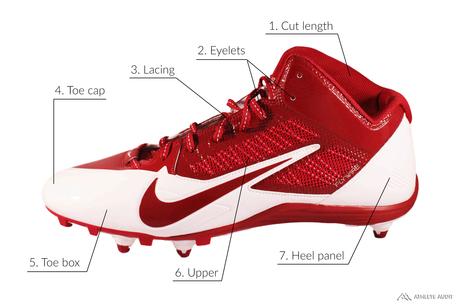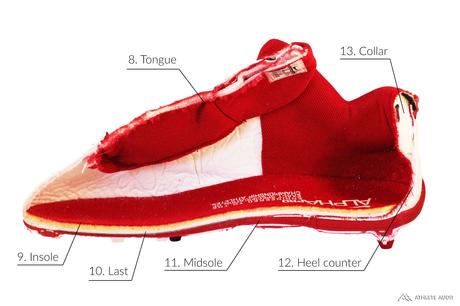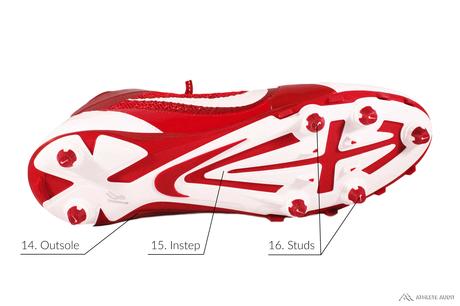Parts of a Lacrosse Cleat



- Cut length – Lacrosse cleats come in either mid-top or high-top options, each with varying levels of mobility and ankle support
- Eyelets – Small holes toward the top of the upper help to guide the laces in place
- Lacing – Traditional laces are most common although some lacrosse cleats can have ankle straps
- Toe cap – A reinforced toe cap helps to improves durability
- Toe box – A flexible toe box is necessary for dynamic movements
- Upper – Uppers are made of tough materials such as leather or synthetic leather
- Heel panel – The piece of fabric that covers the heel portion of the cleat
- Tongue – A padded tongue helps to provide comfort and a snug fit
- Insole – The footbed that your feet rests on, helps to provide comfort and orthotic support
- Last – Lies underneath the insole and is what a shoe is built around. Determines the shape of the shoe
- Midsole – A thin midsole allows you to feel the ground underneath you without pain from pressure points
- Heel counter – A sturdy plastic insert behind the heel that provides structural support for the heel
- Collar – A padded collar provides comfort and ankle support
- Outsole – Often made of molded plastic or rubber, the outsole houses the studs
- Instep – The arched middle area of the cleat
- Studs – Plastic or rubber studs are strategically placed to provide optimal traction on fields. Many cleats feature removable studs
Learn how to choose lacrosse cleats here

